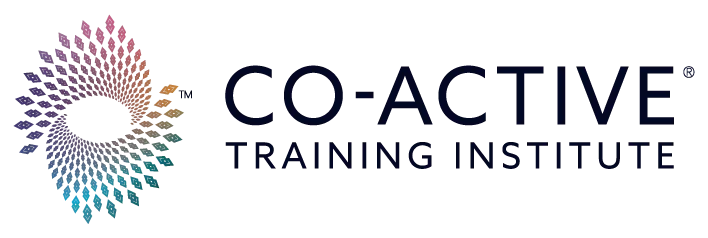Is it possible you have an unconscious bias? Consider this scenario:
A dad and his son are in a terrible car accident. The dad dies on the spot, and the child is rushed to the hospital for surgery. Once in the operating room, the surgeon says: “I cannot operate on this child — he is my son!”
How can that be? The answer is simple: the surgeon is his mother.
If the surgeon’s statement gave you pause, you may have an unconscious bias. When we speak about unconscious biases, we refer to automatic attitudes, assumptions, and judgments about others. They stem from our brain’s natural tendency to categorize information to make processing more efficient. This tendency is a survival mechanism that helps us make quick decisions. It can lead to the formation of stereotypes and prejudices that can occur even when we do not consciously endorse them.
Explore Coach Training With Co-Active Now
Unconscious biases are shaped by various factors, like our lived experience, cultural norms, beliefs held by the collectives we belong to, and even media portrayals. They operate beneath the surface of conscious awareness, influencing our thoughts, feelings, and behaviors. They are like an unseen force that shapes our interactions, decisions, and perceptions — often without our noticing.
Unconscious Biases in Coaching
As Co-Active coaches, we are highly committed to partnering with our clients to facilitate their personal growth, transformation, and professional development and to support them to cultivate wellness and lead fulfilling lives.
Although we commit to approaching each client without judgment, we are susceptible to unconscious biases. As we develop as leaders, our impact increases, so it’s important to understand those biases before and during our coaching efforts.
Here are five different types of unconscious biases that can show up in our coaching practices:
Confirmation Bias
This bias speaks about how we unintentionally seek out, give more weight to, or remember information that confirms our preconceived notions about a person, an event, or the potential context. One way this may show up is when we direct a client’s attention to goals based on our own belief about what the client needs and focus on progress that aligns with our assessment while overlooking areas where the client is expressing interest.
Attribution Bias
We may be quick to jump to conclusions about ourselves or the motives of other people’s actions. For example, we might consider positive changes in a client’s behavior a consequence of our coaching strategies and interventions, while attributing the failure to achieve desired changes to the client’s resistance to change or not putting in enough effort.
Availability Heuristic
Heuristic means “involving or serving as an aid to learning, discovery, or problem-solving.” Availability heuristic bias involves relying on information readily available in memory when making judgments about a person or situation. When driven by this bias, we might focus on easily observable changes in a client’s behavior rather than more subtle but equally important changes. This can result in overlooking significant aspects of the client’s development.
Halo Effect
This is a cognitive bias where an overall impression of a person, typically based on one prominent characteristic, influences how we perceive and evaluate their other traits and behaviors. When this bias is present, we might believe that punctual, well-prepared clients are more committed to the coaching process than those who may be equally committed but express it differently, in a manner outside our experience or value system.
Microaggressions
These are subtle, often unintentional, discriminatory comments or behaviors that can have a significant negative impact on another person.
One example of how this may show up is when we embrace the perspective of “everyone has challenges,” dismissing the client’s struggles or suffering in a way that minimizes their unique experiences. Another is when we focus excessively on a client’s race, gender, ethnicity, sexual orientation, or other aspects of their identity in ways that are not relevant to what the client is working on. This can reduce a client to that single aspect of their identity.
Our biases can manifest in different ways when we are coaching clients. When they do, they can limit our ability to meet clients where they are, cultivate empowered relationships, self-manage, hold space, listen, or be truly curious.
Mitigating the Impact of Unconscious Bias
Here is the good news: Once we humbly accept that these biases are naturally human, we can address them in various ways. The great news is that the Co-Active model offers us support to reduce the impact of our biases. Here are four ideas that may serve you in your journey:
1. Develop Self-Awareness
Mindfulness practices and reflective exercises can enhance self-awareness and emotional regulation, reducing the influence of automatic biases. By promoting a non-judgmental awareness of our thoughts and feelings, mindfulness can help us pause and reconsider our initial reactions.
We must be curious and introspective to identify our biases and prejudices. One powerful resource is the Implicit Association Test (IAT). These tools shed light on our beliefs and enable us to develop different perspectives.
2. Empower Your Relationships With Clients
- Include awareness of unconscious biases in your designed alliances with clients by showing genuine interest in understanding each client’s unique background, experiences, and needs.
- Actively listen to clients and validate their experiences without judgment. Match their language and preferences rather than using generalized language or substituting your language for theirs.
- If you are making an assumption, articulate it as such rather than expressing it as “truth.” Then get curious to encourage clients to express their thoughts and feelings about what you have offered them.
- Use inclusive language and be mindful of cultural sensitivities in your communication.
- Be transparent and acknowledge your mistakes.
- Be open to adjusting your coaching style based on ongoing feedback from clients.
3. Seek Supervision and Mentorship
Seek mentorship from professionals who excel in cultural competence and inclusive practices.
4. Enhancing the Overall Coaching Relationship
As we become aware of our biases, we expand our power to choose how we relate, communicate, and behave in our coaching relationships. This helps us cultivate more inclusive, safe, and courageous spaces that enhance the coaching experience and promote better outcomes for everyone involved.
Become a Co-Active Coach
The Co-Active Leadership Model helps coaches become aware of their unconscious biases and learn effective ways to help others achieve transformation through coaching. Our immersive and interactive training increases your self-awareness, skillset, and ability to employ valuable tools in the workplace or with coaching clients.
Connect with a broad community of like-minded people who desire to have a meaningful impact on others and learn from the world’s top coach trainers. We have developed and activated effective coaches for three decades and have all the tools you need to become the coach you want to be. Learn more about our programs on our website, and let us help you get started.

